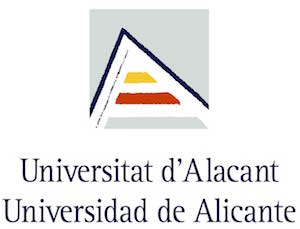TECHNOLOGY DESCRIPTION
Researchers at the University of Alicante have developed a method to recycle composite fiberglass structures on a polymer matrix (resin). The process removes the polymer matrix, recovering glass fiber which can be reused.
The process is not aggressive with fiberglass. It takes place at room temperature and is able to recover all the fiberglass used. The method is industrially scalable and can be automated.
Fiberglass composites and resin are widely used in the construction of boat hulls, tanks, wind turbine blades and many other applications. This method is a very important innovation for the sector and there was no effective method that allowed recovering and reusing these materials.
The method developed by the research team at the University of Alicante overcomes the previously stated drawbacks.
By a chemical process the separation of the glass fibers from the polymer matrix is completely achieved. This process is performed under soft conditions of pressure and temperature so that the fibers do not degrade and can be reused in new construction processes.
The process is relatively simple and consists of three basic steps:
1. Separation of other materials that can be incorporated, such as wood or metal.
2. Chemical treatment of the composite material under conditions of temperature and specific pressure.
3. Separation of fiberglass resin debris by sieving.
The process is scalable industrially and is able for being automated. Chemicals used in the process can be recovered and can be reused in consecutive cycles
BENEFITS
ADVANTAGES OF THE TECHNOLOGY
• Fiberglass recovering without degradation, allowing reuse.
• The process is performed under soft conditions of pressure and temperature.
• The method is economically very profitable (the chemical process energy cost is low and the necessary reagents are not expensive).
• Possible scaling up of the process.
• Applicable to a large number of products formed by resin and fiberglass.
• The method devised, unlike other processes, does not involve highly polluting emissions into the atmosphere.
INNOVATIVE ASPECTS OF THE TECHNOLOGY
The technology is very innovative at a global scope because there is not in the market any optimum solution solving the problem of composite fiberglass and resin recycling.
The process is not aggressive and allows to separate and recover 100% of both materials. It represents an ideal way for recycling the huge volume of material that is removed daily in the world.
LIMITATIONS
N.A.
APPLICATIONS
The main area of application is ship recycling. Vehicles are large and when they fulfill their life, there is not any definite destination for removal. Currently there is no economical process to recover this material.
In addition to the marine industry of the compounds of resin with glass fiber other uses can be found. They are used in the aerospace and automotive sectors for manufacturing vehicle parts. It is also a building material used in buildings, bridges, pipelines, insulation, railings, marine stairs, deposits, etc. Recently its use has spread to other sectors as in the manufacture of sports equipment (skis, surfboards, canoes, poles, arches, etc.).
Readiness Level (TRL)
 Patent Grading Report |
Patent Grading ReportThe Grading Patents Report evaluates and grades US patents Sample Buy from Wisdomain |
STATUS
Current status
PCT Application
AVAILABILITY
Available for
Licensing
INVENTOR / TEAM
Bueno López, Agustín






